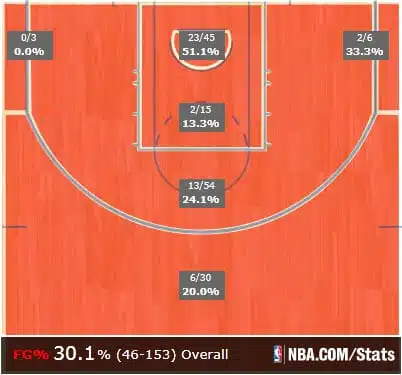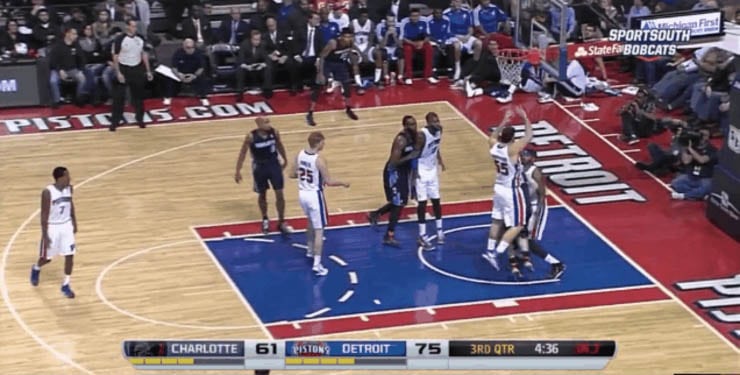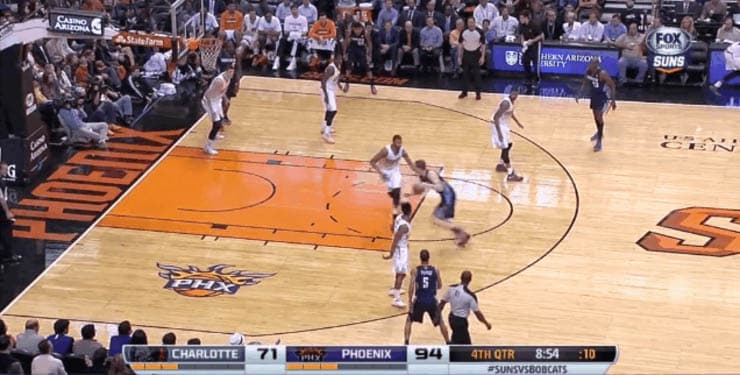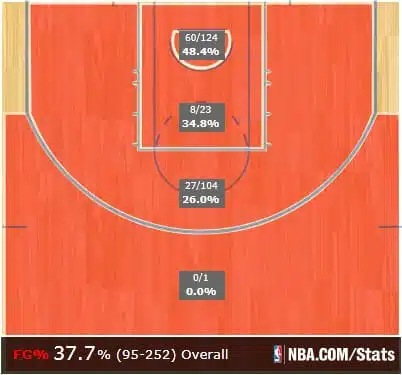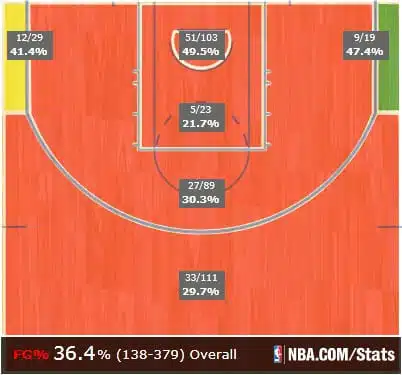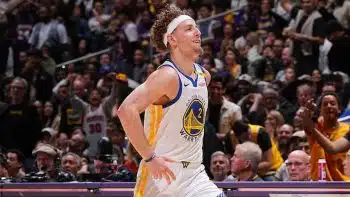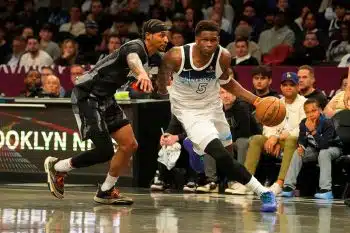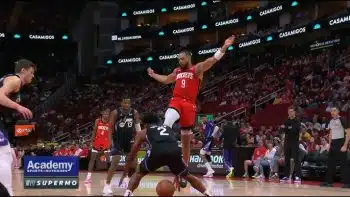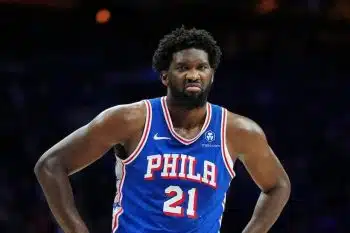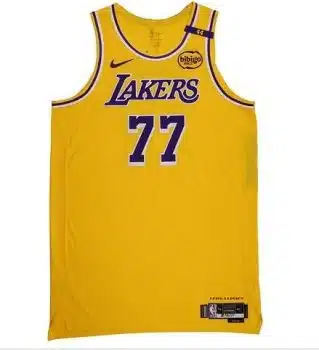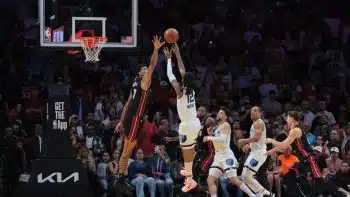NBA
Can These NBA Rookies Be Salvaged?
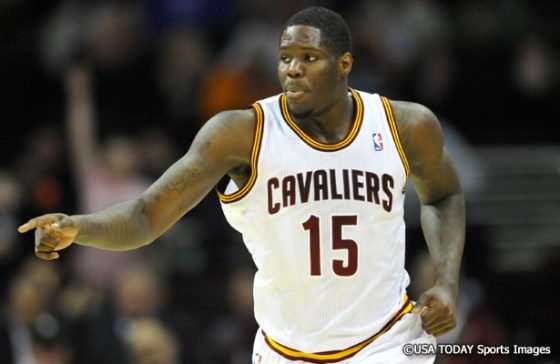
Long before it was actually held, pundits deemed the 2013 NBA Draft one of the worst in recent memory. Since then, the top 10 has done absolutely nothing to dispel that notion. Aside from second pick Victor Oladipo and ninth pick Trey Burke, every rookie in the top 10 has been disappointing, injured, or both.
Do these rookies’ struggles bear ill portent for their fanbases, or can they turn it around? I talked to several scouts and executives, then went to the film and the stats to determine what to make of five rookies’ bad starts.
One key point to remember is the context for each of these players. As one Western Conference executive pointed out to me, the rookies who have struggled the most are generally on teams that are at least trying (if not succeeding) at winning this year. Unlike a lot of years, rookies Anthony Bennett, Otto Porter, Cody Zeller, Alex Len and Ben McLemore are on teams that are contending for the playoffs or at least attempting to make a playoff push this year. Rookies naturally make mistakes, which the coaches of these teams feel like they cannot afford. These mistakes often lead to the rookie sitting on the bench, which leads to a vicious cycle as the player loses confidence.
»In Related: 2014 NBA Mock Draft
On the other hand, the executive said, “Look which rookies are doing great. The top four rookies are Oladipo, MCW [Michael Carter-Williams], Burke and Giannis [Antetokounmpo]. They play for the four worst teams in the league. None of them care about winning right now.” These players have been given the minutes and freedom to make mistakes. The guards are even playing relatively similar roles to what they did in college, while Antetokounmpo has started most of the year on a Bucks team whose wing rotation has been devastated by injuries, ineffectiveness and lassitude.
Another obvious but easily forgotten piece of context was provided by multiple scouts, who noted that drafts should not be judged until three years after they occur. One Western Conference scout lamented that by that point people have often already been fired and that there is “way more pressure now” for draft picks. “Look at James Harden and Tyreke Evans. How many times has that script been re-written?”
With that context in mind, let’s turn to five struggling rookies.
Anthony Bennett
Last June, I believed Bennett was a top-three pick based on the fact that he had the highest offensive ceiling in the draft. After putting on at least 20 pounds over the summer while he recuperated from shoulder surgery, Bennett’s stats have been bad enough to make him jealous of LaRue Martin. His PER is 4.1, about five points lower than replacement level, and his NBA.com shot chart would make Vladimir Ilych Lenin proud.
But those I talked to said that it was too early to write him off. One scout who watched him a lot at UNLV said he thought he was “Jamal Mashburn meets Larry Johnson” coming out of school, and still had that kind of potential. A few also intimated that whether he recovers to become an effective NBA player depends on his makeup, especially because he has “something hanging over his head” after being the number one pick. Another noted that he still is not in great shape. Undersized power forwards who are successful play with great energy and outwork their opponents, and Bennett has not been able to do that so far in his NBA career.
On film, Bennett shows great potential, but very poor overall results. On rare occasions he looks outstanding isolating and going to the basket, almost always to his left.
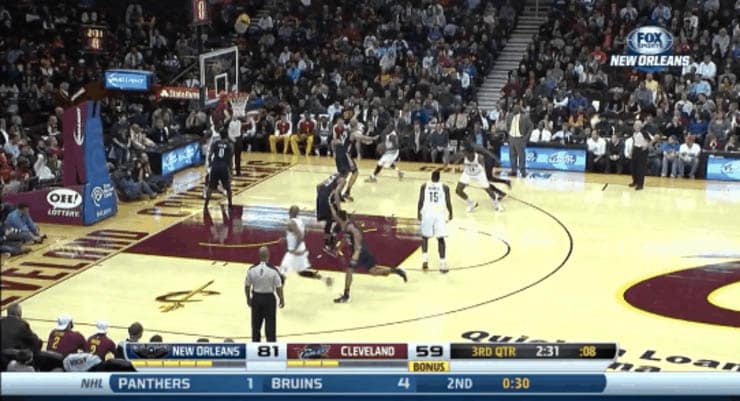
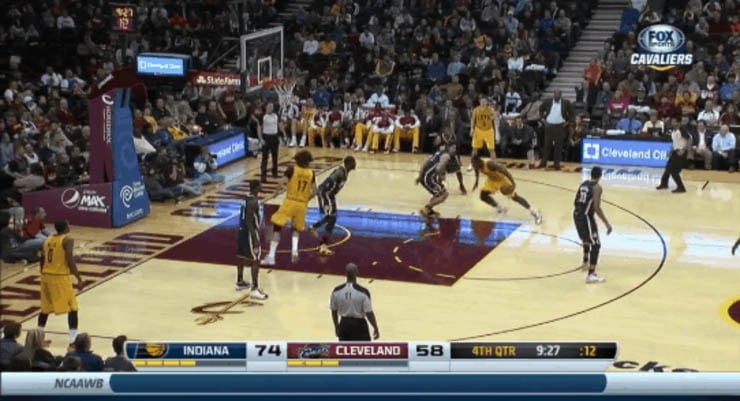
He also shows great potential as a pick-and-pop threat with his quick-release three-pointer.
Overall, however, these positive instances are few. What struck me most about Bennett is that he just does not play like a big man despite his heft. His moves inside are almost always of the finesse variety. He tries to go around or over defenders rather than carving out space with his shoulders (which could be because he is a little gun shy due to the shoulder surgery). Bennett also really needs to work on his left hand (especially as often as he drives left), as a lot of his missed finishes at the rim occur when he uses his right hand on the left side. What made Bennett so intriguing as a prospect was his outstanding shooting, dribbling and jumping ability for someone so big and strong. He is going to need to learn to use that strength to maximize his potential. This would help his free throw rate, which ranks below the league average at about one free throw for every four field goals. Bennett also needs to throw his weight around on the offensive glass. His 7.7 percent offensive rebound rate is in the bottom half of power forwards, which is disappointing considering his college statistics.
Part of that is because he is very often on the perimeter shooting (and missing) jumpers.* Most of these come out of pick-and-pops. His quick release could be a huge weapon on these in time, but is currently a detriment because he does not adequately set his feet on a lot of his shots after he pops out. He must better his footwork in this aspect of the game. While there is no way of knowing whether his jump shot will ever come around, he made them in college and presumably makes enough in practice that he is allowed to take them in games. This is another area in which getting in better shape will help, as less fatigued legs should better his jumper.
Another adjustment Bennett could make in the pick-and-roll is trying to set harder screens. One of the key differentiators of his successful pick-and-rolls is making solid contact with the ballhandler’s man. Another is when he rolls to the basket instead of immediately popping. He does the latter about 80 percent of the time, and usually barely makes contact Carlos Boozer style on these plays.* By contrast, rolling to the basket is one of his very few effective play types.
Defensively, Bennett has not been horrendous for a rookie who was not expected to shine on that end. The Cavs’ bad defense isn’t significantly worse with him on the court, and the only area in which he has particularly struggled is in closing out on shooters, which again may be the result of his conditioning.
The good news for Bennett is that his issues are things that he could plausibly improve, including getting in better shape, using his body better inside and actually hitting some jumpers. Nevertheless, the best predictor of future performance is past performance, and it must be noted that the list of rookies who have played as badly as he has and gone on to great things is nonexistent. Equally troubling, he really hasn’t started playing any better yet; his numbers since January 1 are nearly on par with his season-long statistics. Plus, he is a year older than most who come out after their freshman year, turning 21 in March. Given his performance to date, it is very difficult to imagine him becoming a star, and unlikely that he even becomes a solid starter. But we cannot yet entirely foreclose the possibility if he is willing to put in the work. With the Cavs out of the playoff race, they need to see what he can do the rest of the year. Despite his struggles, I still think he has the best chance for stardom of this group.
Cody Zeller
Charlotte Bobcats fans were none too happy about the drafting of Zeller with the number four pick in the draft, and thus far they have proved more prescient than Bobcats management. Zeller has been unable to beat out Josh McRoberts for the starting power forward job, a disappointment on a Charlotte team that basically had no good big men last year. The scouts and executives largely agreed that Zeller was a reach with the number four pick. Said one, “If you were Charlotte you might look down the road and wish you had done a little better.” Said another, “I think he can have value in the league, but I’d probably lean toward him being more of a backup. He’s kind of like Tyler Hansbrough. Does he have value, sure? But a star? No. Zeller is a longer version of that type of energy player.”
Zeller wowed scouts with his “athleticism” at the combine, but he is an example of the dangers of such testing. While I normally put great stock in the numbers, this testing is a different animal. Athleticism is far better evaluated on film and through actual game performance. Zeller’s 35-inch vertical and agility testing were considered outstanding at the combine, but it is hard to call the seven-footer athletic when he doesn’t block shots, dunk on anyone or even finish inside well. That last is the most concerning part of his game. He shoots 48 percent in the restricted area. Even worse, he shoots only 44 percent* on non-post ups around basket, a miserable number considering most of those attempts occur after receiving the ball inside with an advantage on the defense.
Another disappointing aspect of Zeller’s play is his outside shooting. Zeller shot few jumpers when he played center in college at Indiana, but his camp successfully painted him as a stretch four leading up to the draft. His jumper looks pure, but the results have been Bennett-like. Overall, his 37.7 percent shooting is horrendous for a big man with a usage rate of 18.5 percent.
One executive commented that “his skill set seems a little undefined right now,” and the numbers bear that out. Zeller is below-average offensively in every category but transition, where he can showcase his ability to run the floor like a deer.*
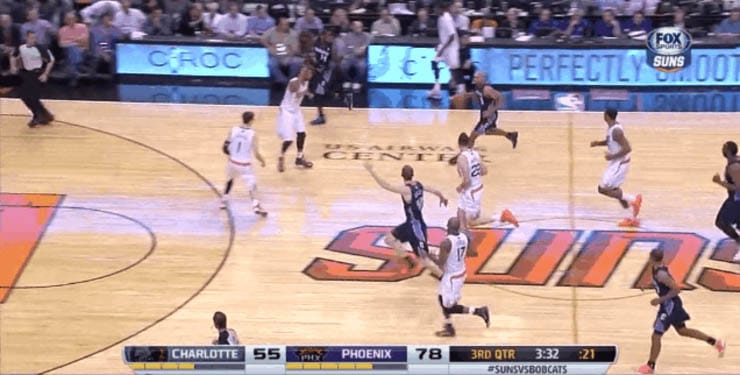
Unfortunately, the Bobcats’ slow pace has provided few chances for Zeller to get out in transition, as he uses a slightly below average six percent of his possessions this way. By contrast, the league leaders (many of whom use far more possessions overall than Zeller) are up around nine or ten percent.
»In Related: Bobcats Are Buyers at Deadline
With his inefficient scoring, Zeller’s future is likely, as one executive said, “more as an energy guy off the bench.” However, the “one caveat is if he develops a three-point shot.” Considering Zeller’s solid form and the fact that he apparently hits jumpers well enough in workouts to impress people, this is not out of the realm of possibility. But right now, he has taken only one three all year. Without adding that shot, it is unlikely he becomes a starting caliber player.
Ben McLemore
McLemore was the player the insiders and I most disagreed on.
Said one, “I think he’ll be alright. The biggest thing he’s getting used to is the speed of the game and making decisions at the speed of the game. He’s still their fifth leading scorer at seven points per game. He’s got some promise, and has two things going for him. If you’re an athletic player who can shoot, you have a future in the league. He’s got good size, he’s very athletic and he can shoot. Just getting the feel to wait on screens comes with experience, he’ll be alright.”
Another was less sanguine, “He doesn’t have great size and has few intangibles. He seems to be another athletic 6’5 guy that can’t do any one thing exceptionally well. If he were good enough he would get noticed in [Sacramento]. They are getting better but were searching for help early on and McLemore was unable to separate himself. He’s getting decent minutes and has shown shooting ability, but needs to find out who he is.”
My projection is much worse for him than either insider’s. The fact McLemore has played 23 minutes per game masks just how bad he as been. He shoots 36.4 percent overall with a .470 True Shooting Percentage.
McLemore’s usage rate is a relatively low 17 percent, but he may need to reduce it even further to become anything other than a massive detriment on offense, at least in the short-term. Of particular note is the fact that McLemore shoots in the 71st percentile on jumpers when unguarded (36 percent of his jumpers), but in the 19th percentile when guarded (64 percent of his jumpers). On film, many of these guarded jumpers are taken coming off screens—the Kings would be wise to junk these plays for now and just let McLemore spot up, cut to the rim and get out in transition. With two high-usage stars in Isaiah Thomas and DeMarcus Cousins, they have plenty of sources of offense.
Probably the most disturbing aspect of McLemore’s game is his poor shooting at the rim, even in transition where he ranks in the 24th percentile. He shoots only 45 percent on layups and is 70 percent (21 of 30) on dunks. Despite his outstanding leaping ability, it is clear that McLemore simply does not have the feel that great, or even average, finishers have for defenders around the basket.
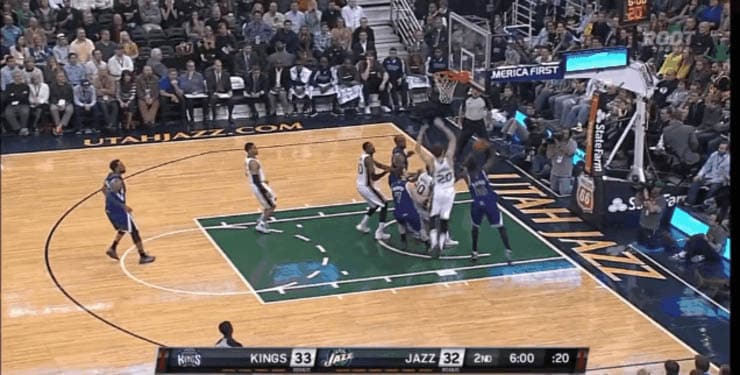
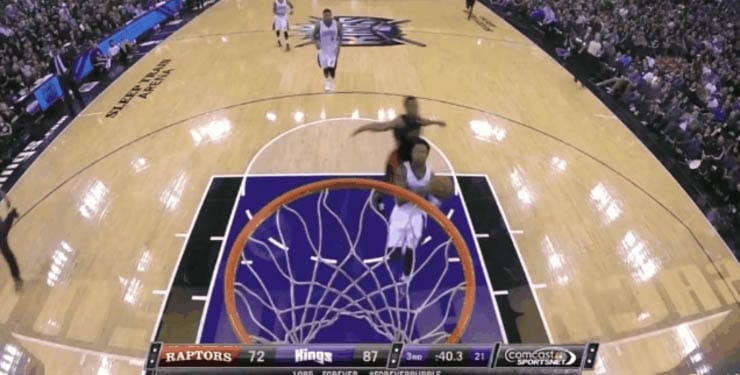
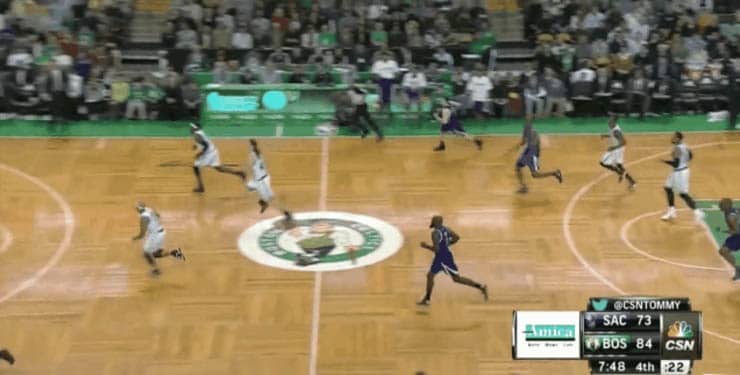
It is very rare to see any NBA two get stopped at the rim like this by other smalls, not to mention one with a 40-inch vertical. This problem is exacerbated by his complete lack of an in-between game, as he has shot only 21.7 percent in the lane away from the rim. Even worse, McLemore has shown no ability to break down his man off the dribble, operate in the pick-and-roll or create for others. One scout’s take that “he’ll need to work on improving his skills with the ball” is a massive (and perhaps diplomatic) understatement. Thus, his only offensive skill right now is making wide open jumpers.
Defensively, things are even worse. While he has decent tools on that end, the Kings’ 29th-ranked defense gives up 5.4 more points per 100 possessions with him on the floor. He does poorly in nearly every defensive play type, rating particularly badly in pick-and-rolls, isolations and spot-ups where he loses track of his man. Overall, the Kings actually outscore their opponents by 0.9 points/100 when McLemore sits. With him in the game, they are minus 5.9 points/100. This is not a product of having played only with the bench, as McLemore started much of the year.
Reports on McLemore’s work ethic are positive. But his lack of feel is the most worrying part of his performance right now. While more research needs to be done on which skills can be improved and which cannot, the areas in which he is lacking seem more nature than nurture. i.e., they are less likely to improve with mere time in the gym. It also must be noted that he too is a year older than the typical freshman due to his redshirt year at Kansas, which further lowers his ceiling a bit.
Alex Len
The fifth overall pick has played only 185 minutes due to offseason surgery on both ankles and the fact that he is clearly the fifth big man on a good Phoenix team. He is shooting 44 percent on the year, with a 9.03 PER.
On film, he has shown flashes of a very high skill level in the post despite his relative inefficiency from there. The problem is that he over-relies on that skill level instead of his pure size. He shoots (and misses) a lot of face-up jumpers. When he gets closer to the basket he pump fakes half the time, which is way too much. While these look pretty when they work, a pump fake is a gambit because it makes a successful shot very difficult if the defender does not jump. Len almost never just backs his man down for a jump hook or drop step, and he travels a lot while attempting his fancy footwork. His style in the post evokes Chris Kaman, a very skilled pivotman who nonetheless has been relatively inefficient.
On a positive note, Len has hit the offensive glass so far. He pulls down 14 percent of offensive rebounds, a rate that would rank in the league’s top five if he had played enough minutes to qualify. On defense he is blocking a respectable 2.8 percent of opponents’ twos, and the Suns are only slightly worse defensively with him on the court.
»In Related: Suns Are Set to be Players at Deadline
The key for Len will be getting stronger and improving his shooting inside. With a 13 percent usage rate and only nine points per 36 minutes, he needs to get his shooting percentage well north of 50 percent to be useful on offense.
Otto Porter
The number three pick elicited little feedback, as he has played only 207 minutes due to a hip injury. One scout noted that Porter is “very long and has shooting ability that would allow him to stick around.” I am not in agreement on the shooting ability. Porter is shooting only 29 percent on the year. On a Washington team with John Wall and Bradley Beal, his offensive role will be as a shooter and cutter. Unfortunately, he has shot only nine threes (missing them all) compared to 29 midrange shots. When he spots up, it’s generally in the 20-foot range, which kills the Wizards’ spacing. They score a mere 88 points/100 in his limited minutes.
While Porter had excellent statistical translations, I worried that he would prove unable to score in the league. He increased his three-point shooting significantly in his second year at Georgetown, but it was not on a large number of attempts. He also does not have the most versatile jumper and has rather ugly form. Porter is also hamstrung by a lack of elite quickness to get to the basket.
The good news is that Porter has played solid defense in this small sample size. The Wizards give up only 95 points/100 with him in the game. Most of the shots he’s faced have been jumpers, but he has done well closing out due to his length and opponents have hit only 25 percent of their jumpers with him guarding them.
»In Related: NBA Rookie Rankings
Porter isn’t going to play much this year with the Wizards making a playoff push and Bradley Beal, Trevor Ariza and Martell Webster all playing well in the wing rotation. But Ariza is a free agent next year, so it seems likely Porter could at least become a rotation player if he can extend his range. The key question is whether he will ever develop the offense to merit a starting job. The (very) early returns are not positive in that regard.
Nerlens Noel Should Have Been the Pick
One would imagine the teams that let Nerlens Noel slide to the sixth pick did so at least in part because he could not help them this year and they are looking to win now. Ironically, drafting Noel and playing some other replacement level player all year would have helped these teams more than the rookies they actually drafted. Although Noel has yet to play, he certainly looks much better by comparison due to the poor performances from the competition.
»In Related: 76ers Ready to Trade Evan Turner?
It should be noted that Noel is very unlikely to ever be much of a scorer away from the basket. Sixers coaches have been rebuilding his shot, but based on the shooting drills I saw him doing in Denver last month the rebuild has not particularly taken. Despite shooting all one-handed jumpers in an effort to fix his form, Noel’s shot was still flat and his right elbow flew way out even while shooting one-handed. Some big men simply do not have an aptitude for shooting, and I fear he may be one of them. Nevertheless, Noel has the potential to be a top five defensive player in the league and an acceptable offensive threat with his finishing at the rim. These skills could have really helped the Cavs, Wizards, Bobcats or Suns down the road. Each of them may rue the day they passed on him.
